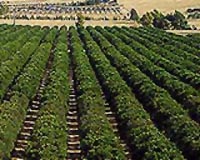 |
Greenbelt MD (SPX) Dec 17, 2010 Humans are consuming an increasing amount of the Earth's total annual land plant production, new NASA research has found. As the human population continues to grow and more societies develop modern economies, this rate of consumption is increasing both as a whole and on a per capita basis globally. In addition to as food, plants are consumed for paper, clothing, livestock feed, firewood, biofuels, building and packaging materials, among other uses. A NASA research group led by Marc Imhoff at NASA's Goddard Space Flight Center, Greenbelt, Md., first quantified this global consumption in 2004, when the group found that in 1995 humans consumed 20 percent of all the land plant material produced that year. Now the same line of research has produced a multi-decadal record of plant production (from 1982 to 2007) that establishes a baseline of the Earth's productivity, and a 10-year trend of human consumption. These new findings are being presented at the American Geophysical Union's Fall Meeting in San Francisco, Calif. Some of the most notable findings from the research include: + From 1995 to 2005, human consumption of land plants rose from 20 percent to 25 percent of the total plant production of each year. Imhoff said scientists think this is a significant rise for that period of time, but that part of the challenge of this research is determining the uncertainties in the measurement, the limits of ecosystems' production and the impacts of a rising consumption rate. + Both total, global consumption and per capita consumption are rising. + In comparing the ratio of a region's production versus consumption, some major urban areas consume more than 30,000 times the amount of regional plant production. + Great regional discrepancies remain. The average person in North America consumes about 6 tons of plant-based carbon each year, while the average person in Southeast Asia consumes just less than 2 tons of plant-based carbon each year. + If every person in the world were to, in the coming decades, achieve current North American requirements of plant material, we would be consuming about 50 percent of all plants grown each year. + While plant production itself varies from year to year, mostly depending on weather, the demand trends are holding steady on the increase. Depending on region, some of the increase is due simply to population growth - more people consume more food, more paper, more wood for burning. This has been seen in places like India, where population is booming but individual consumption levels have not dramatically risen, yet. In other places, where economic growth has allowed for more "westernized" consumption, per capita consumption is driving the trend. And in some places, such as North America, both population and per capita consumption are increasing. "The question is, 'How hard are we pushing the land?'" Imhoff said. "People are wary about that percentage creeping up. Most people consider that a high number, although we're still doing research." The research group's 1982-2009 plant production data - called "net primary production," or NPP, in the science literature - is provided by NASA satellite instruments, first from Advanced Very High-Resolution Radiometer (AVHRR) sensors and in more recent years from Moderate-Resolution Imaging Spectroradiometer (MODIS). The scientists analyzed the consumption data from the U.N. Food and Agriculture Organization's country profiles. Imhoff said that the research does not point to a "doomsday" scenario, but does illuminate some future likely circumstances if current population and consumption trends hold. "We've always looked at population and consumption as separate issues," Imhoff said. Right now, we are increasing both total population and per capita consumption. What we're realizing is the biosphere doesn't care whether you have a lot of people consuming a little or a few people consuming a lot. It's the total rate that matters. And that rate is increasing. "The global demand is going up," Imhoff said. "We've gone from 20 percent demand to about 25 percent demand in 10 years. People worry about that percentage. If, in future scenarios, it's going to go up to something like 50 percent, we're looking at a very high demand for land management to maximize productivity at all levels on the landscape and at the expense of all other uses, for example, carbon sequestration, habitat, or water storage. We would be heading toward a place where the planet would be very carefully managed, from end to end."
Share This Article With Planet Earth
Related Links Goddard Space Flight Center Earth Observation News - Suppiliers, Technology and Application
 NASA Satellite Data Addresses Needs Of California Growers
NASA Satellite Data Addresses Needs Of California GrowersMoffett Field CA (SPX) Dec 17, 2010 With the capability to provide valuable information about individual farm fields, vineyards and orchards, NASA satellites soon will provide California growers in the San Joaquin Valley with important information about crop growth, irrigation demands and forecasts, as well as imagery of their fields throughout the growing season. To support irrigation management decisions by agricultural pr ... read more |
|
| The content herein, unless otherwise known to be public domain, are Copyright 1995-2010 - SpaceDaily. AFP and UPI Wire Stories are copyright Agence France-Presse and United Press International. ESA Portal Reports are copyright European Space Agency. All NASA sourced material is public domain. Additional copyrights may apply in whole or part to other bona fide parties. Advertising does not imply endorsement,agreement or approval of any opinions, statements or information provided by SpaceDaily on any Web page published or hosted by SpaceDaily. Privacy Statement |